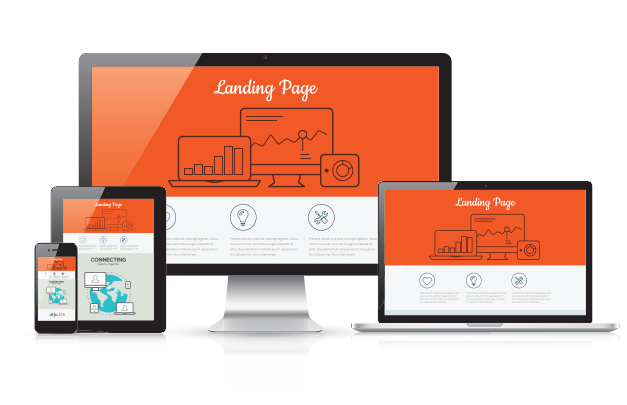Most of us are fortunate enough to say that we’ve never lived through a pandemic — until now. With COVID-19 spreading throughout the world, businesses, schools, and even whole countries are essentially shutting down. This is truly an international crisis, and it’s going to get worse before it gets better.
While people are stockpiling toilet paper and social distancing, most marketers are still hard at work (even if that means working from home). But it can’t proceed like business as usual. Now is not the time to pretend that everything is okay and continue running scheduled campaigns; now is the time to get creative and rethink strategies.
During this time, brands need to be careful that they don’t get caught up in the immediacy of partial information, rash decisions, and hysteria. Instead, focus on the facts and the strategies that show true value and invest in building a brand with long-term effectiveness.
Here are some ideas:
Reconsider Your Current Marketing Efforts
People are going to remember how you handled your marketing efforts during this time, so take the time to evaluate your current strategy — especially on social media. Don’t use this crisis as a quick way to get more customers to buy your products or services. They’re not thinking of that (unless you sell hand sanitizer), so be extremely deliberate with the content you put out.
You might have to completely revamp your social media marketing strategy. Now is not the time to share that amazing video you’ve been working on or pumping out scheduled tweets that don’t address the current concern. Save those marketing pieces for a time and place when they’ll be better received by your desired audience, people who may be feeling afraid with all this uncertainty. Let them know what you’re doing to protect customers and to protect your employees. If you don’t have anything constructive to contribute, it’s better to simply stay silent.
Focus On Inbound Marketing
What can you offer your customers during this tumultuous time? Content with high added value that forms connections and solves problems. In other words, this might be a good time to focus on your inbound marketing strategy.
To reach your audience, start by creating and publishing content — whether that be on your social media channels or as blog posts on your website — that provides value. Examples include information about how your solution can solve their challenges, an industry-specific guide on how to navigate the current economy, or even customer testimonials to build up social proof and form a connection.
Marketers who prioritize blogging efforts are 13 times more likely to see a positive ROI, and 55% of marketers say blog content creation is their top inbound marketing priority. Take this time to brainstorm new and relevant blog topics and make sure that each post is optimized for SEO, increasing the chances that it will organically appear on the search engine results page (SERP) for the people who are looking for that information.
Consider Virtual Events
Many brands rely on trade shows to make critical connections. Trade shows are a billion dollar industry that millions of people attend every year, but this year is going to be different. As the novel coronavirus has spread, the reality has set in that a majority of these events and conferences will be cancelled or moved online.
Google has rebranded Google Cloud Next, an event that usually brings in more than 30,000 attendees, as Cloud Next '20: Digital Connect. Instead of cancelling it outright, they plan to webcast the keynotes and add some digital “ask an expert” sessions with Google teams.
While going virtual won’t completely replace the face-to-face meetings — people want to connect, build relationships, and foster networks — it’s certainly a viable way to interact with people, create connections, reduce travel costs, and repurpose your trade show marketing efforts.
Deliver Superior Customer Service
The companies that have the most success during and after a crisis situation are those that successfully implement and maintain customer retention and loyalty campaigns. We’ve all heard the saying that it can cost five times more to attract a new customer than it does to retain an existing one, but increasing customer retention rates by 5% increases profits by 25% to 95%.
Nurturing the relationships you have with your existing customers is even more important during times of uncertainty. Customers are looking to people they can trust, so first be sure to listen to them and let them know you’re available for two-way communication. This can happen by sending out personalized emails, customizing your newsletter, hosting live chats, or interacting on social media. Answer their questions, listen to their concerns, and monitor the ever-changing situation so you can respond accordingly.
Create a Targeted Lumpy Campaign
What’s a “lumpy”? Simply put, a lumpy is a dimensional mail piece designed to reach a decision maker within a target organization in order to open the door and start a conversation. While customers are inundated with digital mail, sending direct mail is an old school way to slow things down, tell a story, create a lasting impression and, most importantly, start a real dialogue. We like to engineer creative lumpy campaigns that pique interest without coming off as overly salesy. Sending a lumpy right now might be a good way to fill the sales funnel with virtual meetings in the near future and in-person meetings when businesses are ready to reopen their doors.
Moving Forward Amid COVID-19
Yes, this is a scary time full of uncertainty and unprecedented measures are being taken across the board. But panic will eventually subside, markets will recover, spending will increase, and this downturn will turn up. Remember the recession that began in 2007? It lasted 19 months. During those 19 months, consumers didn’t stop wanting and needing things. Rather, many of them simply postponed making large purchases and instead took the time to research and understand where they were spending their money.
Consider pausing the introduction of new products and instead position yourself as an expert in relation to your customers. Tailor your marketing strategy to help them understand and trust your brand, so that when they’re ready to make those purchases, they’ll remember how you provided value, solutions, and communications that met their changing needs.
Photo by Tyler Callahan on Unsplash.



